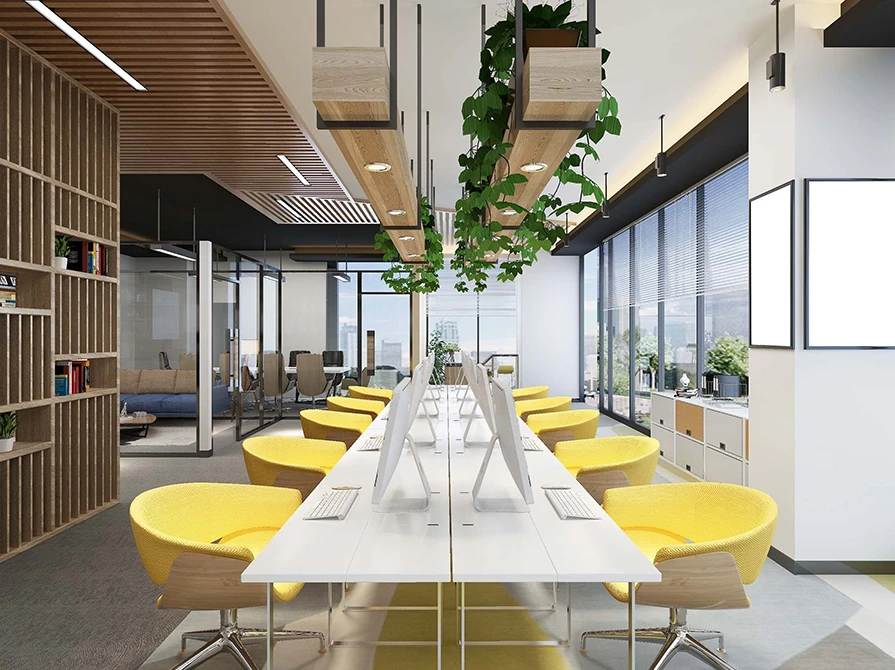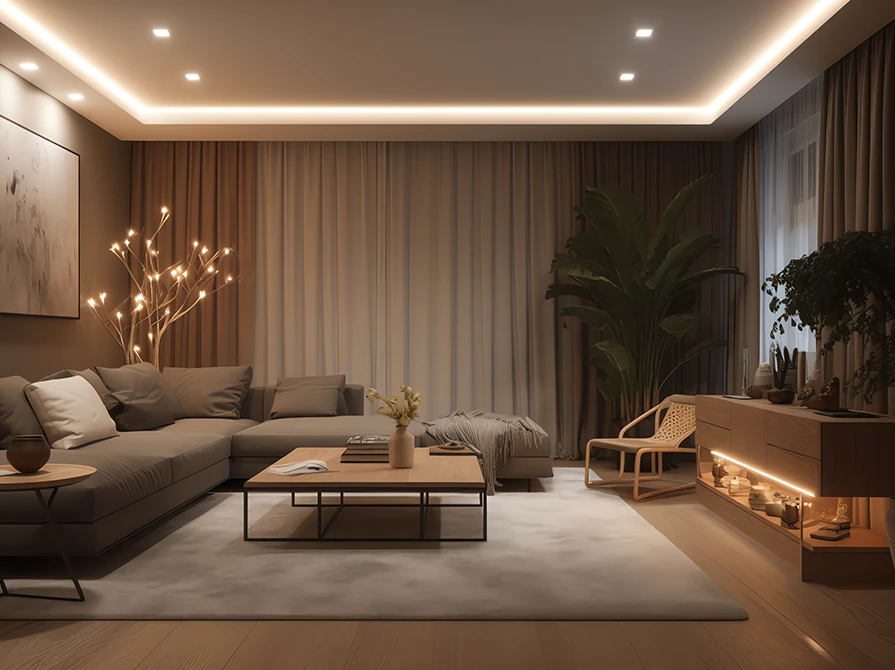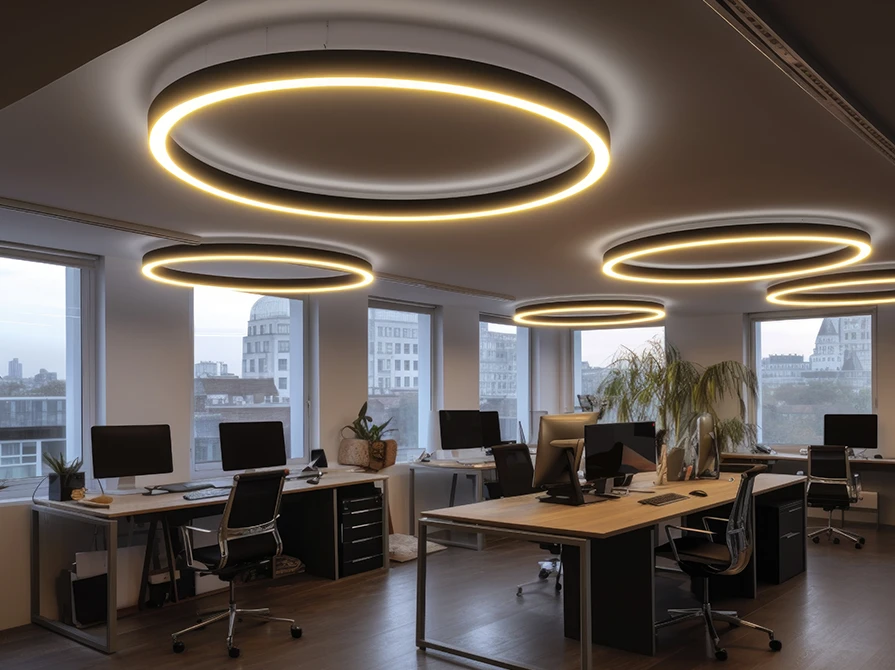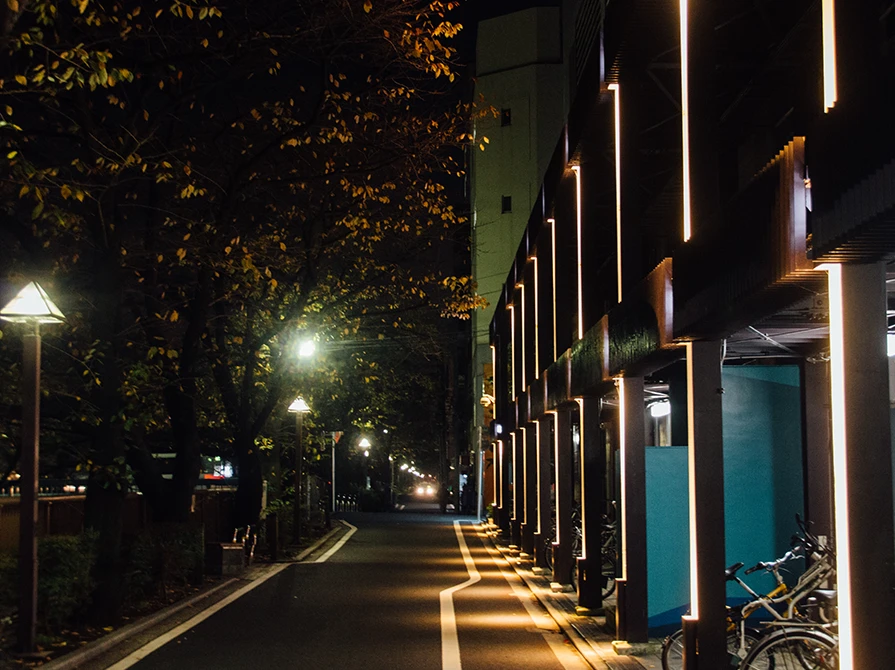

-A-Perfect-Synchrony-of-Mind,-Body-&-Light-33.webp)
In today’s fast-paced world, lighting has evolved from a basic necessity to a powerful element of wellness design. Human-Centric Lighting (HCL) is an innovative lighting approach that tailors light environments to human needs, helping people feel more connected to the natural rhythms that govern sleep, mood, productivity, and health. By harmonizing light with our body’s biological and psychological demands, HCL supports the intricate relationship between mind, body, and environment, creating spaces that promote both well-being and performance.
This blog explores what HCL is, how it affects human physiology and psychology, and why it’s becoming essential in workplaces, homes, healthcare facilities, and educational environments.
Human-Centric Lighting (HCL) refers to lighting systems designed to support the human body's natural circadian rhythms, energy levels, and overall wellness. Unlike traditional lighting, which focuses solely on illumination, HCL uses a combination of light intensity, color temperature, and timing to mimic natural daylight patterns. By doing so, it creates a lighting environment that aligns with the human circadian rhythm, the internal clock that dictates our sleep-wake cycles, hormone production, and mood regulation.
The human body responds to light through various biochemical processes that impact mood, alertness, and health. HCL leverages this response, creating a synchronized interaction between light and body for optimal functioning.
Our circadian rhythm is a 24-hour biological cycle that influences various physiological processes, such as hormone secretion, alertness, and cell regeneration. This rhythm is largely regulated by exposure to light and darkness. Bright, blue-enriched light (similar to daylight) triggers cortisol production, which promotes alertness and energy in the morning. Conversely, as evening approaches, exposure to warm, low-intensity light supports melatonin production, preparing the body for restful sleep.
Beyond what we see, the human eye contains photoreceptors that detect light intensity and send signals to the brain, influencing our circadian rhythm. These non-visual receptors, known as intrinsically photosensitive retinal ganglion cells (ipRGCs), help synchronize our body clock with environmental light.
Misalignment between our internal clock and the external environment can lead to “circadian misalignment,” which affects mood, cognitive function, and overall health. HCL takes advantage of these non-visual receptors, providing optimal lighting conditions that support psychological well-being, reduce stress, and improve cognitive performance.
The right lighting can positively influence concentration, focus, and productivity, which is especially valuable in workplaces and educational settings. Bright, blue-enriched light increases alertness and reaction times, while warmer lighting promotes a calm environment, suitable for creative tasks or relaxation. Studies have shown that employees in HCL-equipped offices report higher job satisfaction, lower fatigue, and improved cognitive performance. For students, HCL has been associated with better attention spans and memory recall, contributing to a more effective learning environment.
Modern life exposes us to screens and artificial lighting that can disrupt sleep patterns by delaying melatonin production. Human-Centric Lighting, with its evening-oriented low-blue, warm light, helps reduce this disruption. This transition to softer lighting in the hours before bed is essential for allowing melatonin levels to rise, resulting in deeper, more restful sleep. Adopting HCL at home or in hotel rooms, where guests need to quickly adjust to a new environment, provides an effective way to improve sleep hygiene, leading to better mental and physical health.
Lighting affects emotional well-being, impacting mood and stress levels. The human brain responds to different light intensities and colors in ways that can either invigorate or calm the mind. Bright, cool lighting can help alleviate symptoms of depression, while soft, warm lighting provides comfort and relaxation. HCL offers lighting conditions tailored to reduce stress, encourage relaxation, and support positive emotions, proving particularly valuable in healthcare facilities and wellness centers.
Human-Centric Lighting enhances productivity and well-being in office spaces. By mimicking natural daylight, HCL helps employees feel more alert during work hours and more relaxed toward the end of the day, supporting a balanced work-life rhythm. Companies adopting HCL have reported lower employee absenteeism, increased productivity, and higher job satisfaction levels, making HCL a valuable asset for human resources management.
Classrooms equipped with HCL offer students a lighting environment that adapts to different activities, from study time to relaxation during breaks. Research suggests that HCL can improve students’ focus, memory, and overall academic performance. Dynamic lighting also helps teachers create atmospheres suitable for different tasks, boosting engagement and learning outcomes.
In healthcare settings, HCL can aid patient recovery by creating an environment that feels natural and calming. By promoting stable circadian rhythms, HCL supports faster healing, reduces patient stress, and lowers dependency on medication. It also aids healthcare staff by ensuring optimal lighting conditions during long shifts, improving alertness, and reducing fatigue.
Integrating HCL into homes creates a personalized lighting experience that adapts to daily routines. Individuals can enjoy morning light that energizes them for the day, followed by warm, relaxing light in the evening that prepares them for restful sleep. This adjustment in lighting aligns with natural cycles, providing a wellness-focused lighting solution for modern homes.
The adoption of Human-Centric Lighting is on the rise as research increasingly validates its effectiveness. Technological advancements are making HCL more accessible and affordable, allowing broader implementation across sectors. Innovations in LED technology, IoT-enabled smart lighting systems, and personalized control through mobile apps contribute to the evolution of HCL, transforming lighting into a truly user-centered experience.
As workplaces, homes, and public spaces integrate HCL, the future promises more personalized, health-conscious environments that support both mental and physical well-being. Architects and designers are collaborating with lighting experts to integrate HCL into sustainable, green buildings, aligning with modern demands for energy efficiency and wellness-oriented spaces.
Human-Centric Lighting is revolutionizing how we approach lighting, offering a nuanced understanding of its impact on mind, body, and emotion. By recognizing light as a powerful influence on our circadian rhythms and overall health, HCL goes beyond mere illumination to support productivity, mood, and physical well-being. As more sectors embrace HCL, it promises to create environments that not only enhance performance but also contribute to a balanced and healthier lifestyle. Contact us to know about our Human-centric lighting solutions and how they can be beneficial for your space.







